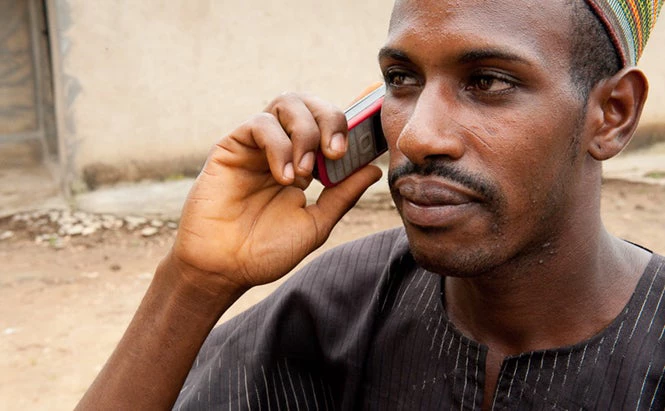Also available in:
Français

And yet, Africa’s agriculture sector is facing serious challenges. Agricultural productivity in Africa lags behind other regions. One in four people in Sub-Saharan Africa are chronically undernourished. Africa’s food system is further strained by rapid population growth and climate change. The food security challenge will only grow as climate change intensifies, threatening crop and livestock production. If no adaptation occurs, production of maize—which is one of Africa’s staple crops—could decline by up to 40% by 2050. Clearly, business as usual approaches to agriculture in Africa aren’t fit for transforming the sector to meet its full potential.
Digital technology could be part of the solution. But how can digital technology help transform Africa’s food system?
It’s instructive to look at startups, which are an emerging force in Africa’s agriculture sector.
Some notable ones include Hello Tractor, which allows farmers to connect with tractor owners and rent smart tractors—a potential gamechanger in Africa where there are 13 tractors for every 100,000 square kilometer (globally, there are 200 tractors for every 100,000 square kilometer). There’s also 2KUZE, which connects farmers, agents, buyers and banks in Kenya, Uganda and Tanzania. Using the 2KUZE mobile platform, smallholders can connect directly with buyers and agents to secure the best price for their goods, and receive payments securely via their phones, without having to walk for hours to markets. In Kenya, a startup called Illuminum Greenhouses constructs affordable greenhouses and installs automated drip irrigation to help smallholders optimize production in an affordable way. To date, Illuminum has helped more than 3,450 farmers boost their incomes.
Digital technology can transform Africa’s food system in three ways. First, it can expand farmers’ access to capital and resources. With the touch of a button on their phone, farmers can now rent machines—like tractors—that require significant capital to buy. Digital technology can also disrupt value chains through economies of scale, allowing smaller players to be integrated into the value chain. For example, e-commerce platforms can link producers directly to consumers, relaxing the constraint that producers need to be a certain size to reach customers. Finally, digital technology can disrupt the management of natural resources through precision tools, helping to boost food production sustainably. Digital technologies can make information on land, soils and other resources more widely available, allowing farmers to apply inputs like fertilizer and water in a more precise manner.
Already, the World Bank is starting to engage more deeply with startups in the agriculture space. Recently, we hosted more 35 startups in Kenya and Ethiopia to explore how we can partner for innovation in agriculture. We’re also partnering with companies like Digital Green—which delivers digital ‘how to’ farming videos to smallholders in Ethiopia, Ghana, Malawi and Niger. The World Bank’s newly established Agriculture Observatory accesses and deploys high resolution agrometeorogical data to help us detect and respond proactively to food shocks before they become famines. In Kasai, Democratic Republic of Congo, the Agriculture Observatory confirmed that food security and crop failures were due to factors other than climate change. We were able to quickly redesign our project to address the relevant stressors.
As policymakers, government and entrepreneurs explore ways to leverage digital technology to transform Africa’s food system, what areas should they focus on? I propose four areas. First, it’s important to create a digital ecosystem for extension, to give more farmers greater access to learning that can improve their farming. Secondly, it is vital to support more transparency in market prices. Advisories and apps that provide access to price information will allow farmers to get prices on their own without a middleman, foster more competition, and put more revenues in farmers’ pockets. Third, precision agriculture is a game changer and more effort should be put into making these technologies more accessible and affordable. Drones, sensors and other tools can make a difference in farmer productivity and should be in the hands of more farmers. Finally, there should be a greater focus on introducing entrepreneurial approaches into Africa’s agriculture higher education system. After all, future generations need to learn design thinking, incubation and other approaches in order to design the solutions, tools and technologies that will bring Africa’s food and agriculture system into the future.


Join the Conversation